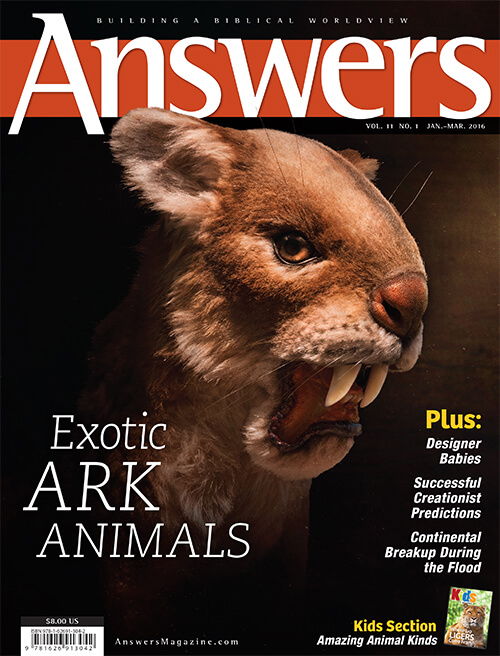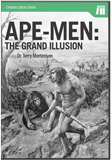
New Find . . . Same Question
Perspective
The Naledi skeletons in South Africa, whose discovery was announced last September, represent the latest species declared to be a likely human relative. Possibly one of the biggest stories of the decade, it made the cover of National Geographic. At least 15 skeletons have been found so far, deep in an almost-inaccessible cave. All of these creatures have curved fingers and long arms.
Evidence of stone tools, which are almost always found in human dwelling places, is missing, and the bones haven’t been gnawed on, so they weren’t dragged there by predators. For so many bodies to be there, many scientists presume they must have journeyed deep into the cave repeatedly, not to hunt but to bury their dead.
Such discoveries of previously unknown creatures are fascinating because they expand our knowledge of the variety God placed within creation, and they provide clues about the spread of humans and apes after Noah’s Ark landed.

The discovery of H. naledi leads some to ask where it fits in the hominid evolutionary tree. Creationists, on the other hand, seek to answer whether it is human or an extinct ape.
In the final analysis, the bones must be either fully ape or fully human.
Are these apes or human? It’s important to review the research carefully. Since access to the original bones is limited, an accurate assessment is often difficult.
The evolutionary researchers themselves are uncertain about the bones’ age because the material from which the bones were dug cannot be dated by radiometric methods. So they’re not sure where to place them in their timeline of supposed ape and human evolution.
Researchers’ use of tentative words like evidently, suggest, maybe, guess, and mysteries highlights just how little is truly known about the bones so far. In all the excitement surrounding the discovery, it is easy to lose sight of this tentativeness and subjectivity.
Creationist biologist Dr. David Menton, who oversaw design of the Lucy exhibit in the Creation Museum near Cincinnati, commented, “I am not convinced that H. naledi is human, and I don’t recognize the status of ‘near human.’” He added, “From what I can see from the fossils and skull reconstruction, H. naledi had a sloped lower face and a very robust mandible that bears little resemblance to humans. It also has a small cranium. In addition, the proximal and medial phalanges [finger bones] of the hand are even more curved than A. afarensis, suggesting an apelike creature.”
The evolutionists who announced H. naledi do not yet claim their find is a direct ancestor of modern humans or belongs on a branch of the family tree. Their uncertainty is not at all surprising because evidence cannot speak for itself.
In the final analysis, the bones must be either fully ape or fully human. H. naledi descended either from ape ancestors on the Ark or from one of Noah’s sons. Observational science has never found evidence that one creature changes into a more complex one.
Related Downloads
Perspective
Audio DownloadAnswers Magazine
January–March 2016
Discover the role of ancient Near Eastern writings in understanding Scripture and learn about some exotic animals that can only be explained by a Creator.
Browse Issue SubscribeRecommended Resources

Answers in Genesis is an apologetics ministry, dedicated to helping Christians defend their faith and proclaim the good news of Jesus Christ.
- Customer Service 800.778.3390
- © 2024 Answers in Genesis






